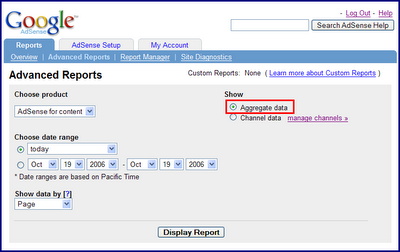Site targeted ads compete in the same auction as contextually targeted ads. They will only appear on your site if they represent a higher eCPM than any combination of contextually targeted ads competing to display in the same ad unit. The AdWords auction process takes into account factors such as bid price and clickthrough rate in calculating Ad Rank, the ranking system determining which ads will appear on your page. Opting into site targeted ads should only improve your overall revenue potential by deepening the pool of advertisements competing to display on your sites.
So why is the eCPM associated with site targeted ads sometimes lower than the eCPM associated with contextual ads in your Advanced Reports? The answer is that site targeted ads are most likely appearing on lower performing pages within your account – in other words, pages requiring a lower eCPM to win the AdWords ad auction. For example, say your ad unit on 'PageA.com' has an eCPM of $5.00, and a combination of contextually targeted ads are displaying. Your ad unit on 'PageB.com' has an eCPM of $1.00, and a site targeted ad is displaying because it represents the highest revenue potential for this page.
If these are the only two pages on which you are displaying AdSense ads, your Advanced Reports will show an eCPM of $5.00 for contextual ads, and an eCPM of $1.00 for site targeted ads. However, all of your ad units are automatically optimized to display the highest paying ads available at that moment.
Lastly, please remember that site targeted ads pay on a cost-per-thousand impressions (CPM) basis, not on a cost-per-click (CPC) basis, so you will be paid whether or not your visitors click on them. For site targeted ads, clickthrough rate does not affect eCPM since advertisers bid on a cost-per-thousand impression basis rather than a cost-per-click basis.
For more articles about different markets please visit my articles and links directory.
http://googlelinksdirectory.com/
Thanks for yours time have a good day :-)





